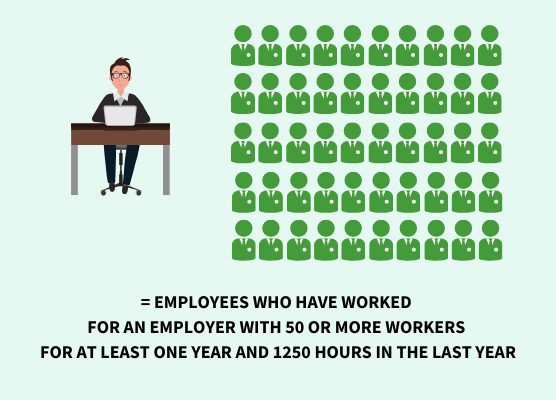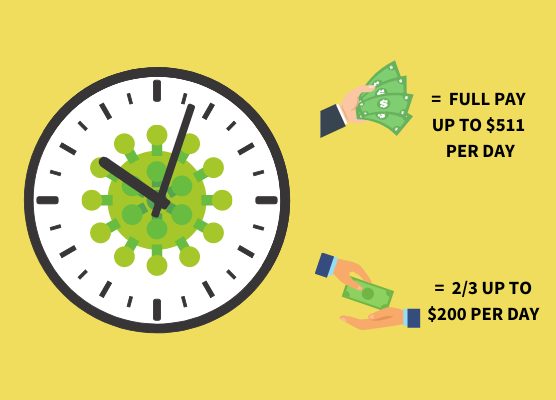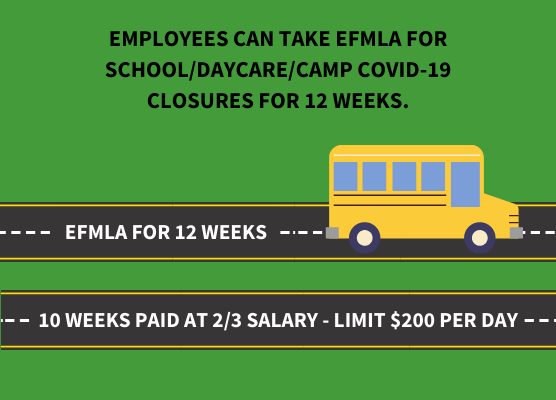FMLA, FFCRA and Intermittent Leave: When to use which

The Family and Medical Leave Act (FMLA) and the Families First Coronavirus Relief Act (FFCRA) give workers job-protected time off. For some workers, leave is fully or partly paid. Under some circumstances, workers can take leave intermittently. FFCRA provides two types of full or partially paid leave through expanded Emergency FMLA leave and a new COVID-19 paid provision. Thus, there are three ways that workers affected by the pandemic can take time off work. However, not every worker will be eligible for all three. Nor are all employers covered. That’s because the new provisions don’t have the same service requirements. There is some overlap in employers covered by pre-existing FMLA provisions and the new ones. But very large and some very small employers are not required to provide the new paid leave.
Fortunately, the new paid leave paid leave can be at no cost to employers. The key is understanding how the IRS processes tax credits for leave paid to workers. Employers also have to master which law applies to which workers taking leave for which reason. Fortunately, there’s help. Here’s how to navigate each law and determine which law or combination of laws applies.
FMLA basics
There are now three distinct types of FMLA leave available, depending on the size of the employer and worker service. The first two types are not new and are unpaid. Employers who have at least 50 workers within a 75-mile area are covered. Employees aren’t eligible for unpaid leave until they have worked for their employer for a minimum of one year. Breaks in service are allowed as long as they are for less than seven years. In addition, they must have worked for the employer 1250 hours within the last year. Thus, some part-time workers are covered if their hours total 1250 for the year. Most leave does not have to be taken in one stretch but can be taken intermittently.
Basic FMLA leave is available under two separate provisions. When Congress first passed the law, it provided up to 12 weeks of unpaid leave for three specific situations:
- Self-care: Employees who suffer from a serious health condition may take up to 12 weeks of unpaid FMLA leave. This is the so-called self-care provision.
- Birth or adoption: Employees can take FMLA leave following the birth, adoption, or foster care placement of a child.
- Care for a spouse or immediate family member: Employees may take FMLA leave to care for a spouse, parent, child, or other immediate family member suffering from a serious health condition.
Congress later amended the FMLA to cover Military Servicemembers and their families. They are eligible for two types of leave:
- Military deployment: Employees may take up to 12 weeks FMLA leave for qualifying exigencies when the employee’s spouse, son, daughter, or parent is on covered active duty or call to covered active duty status as a member of the National Guard, Reserves, or Regular Armed Forces. This includes providing childcare, attending military ceremonies, visiting with the servicemember during Rest and Recreation breaks, and taking care of legal matters related to the absence.
- Military caregiver leave: Employees can take up to 26 weeks of care-giver leave to care for a seriously injured or ill covered servicemember.

FMLA Eligibility Summary: Unpaid FMLA leave is available for employees who have worked for an employer with 50 or more workers for at least one year and 1250 hours in the last year.
FFCRA basics
The FFCRA includes provisions for two new types of fully or partially paid COVID-19 related job-protected leave. The FFCRA covers most employers with fewer than 500 employees. Thus, leave is available for some workers not otherwise covered by the unpaid FMLA provisions because it covers employers with 1-49 employees, too. A worker could receive paid leave under FFCRA but not be entitled to further unpaid FMLA leave. Conversely, employees who work for companies with over 500 employees are eligible for unpaid FMLA leave, but not paid FFCRA leave.
The law went into effect on April 1, 2020 and will expire on December 31, 2020 unless Congress extends it.
The first type of paid FFCRA leave covers full and part-time employees. It is either fully or partially paid, depending on why the employee is taking leave. There are no prior service or minimum hours worked requirements. All workers are immediately eligible on hire. Leave is for two weeks or a total of 80 hours, depending on whether the employee is full or part-time. For example, a full-time employee could take two scheduled weeks off. A part-time employee could take up to 80 hours off during a two-week period, depending on his regular part-time schedule. A 20 hour per week part-timer could take just 40 hours of paid leave over two weeks.
FFCRA paid emergency sick leave is available for employees for the following COVID-19 related reasons:
- The employee is subject to a Federal, State or local quarantine or isolation order related to COVID-19; or
- Has been advised by a health care provider to self-quarantine related to COVID-19; or
- Is experiencing COVID-19 symptoms and is seeking a medical diagnosis; or
- Is caring for an individual subject to quarantine, told to self-quarantine or experiencing symptoms and seeking diagnosis; or
- Is caring for his or her child whose school or place of care is closed or whose childcare provider is unavailable due to COVID-19 related reasons; or
- Is experiencing any other substantially similar condition specified by the U.S. Department of Health and Human Services.
Employers must pay workers absent for the first three reasons their full pay up to $511 per day capped at $5110. Employees who take this leave cannot do so intermittently. That’s because they are automatically required to remain in isolation for two weeks. And given the short duration, it’s unlikely employees taking leave for the last remaining reasons will request intermittent leave. Taking time off for the remaining reasons entitles the worker to 2/3 pay capped at $200 per day or $2000 total.

Eligibility summary: Employees are immediately eligible upon hire by an employer with fewer than 500 employees for up to two weeks or 80 hours of COVID-19 related leave. Pay is either full up to $511 per day or 2/3 up to $200 per day depending on the leave reason.
Emergency FMLA leave basics
The FFCRA also expanded the FMLA by adding a COVID-19 Emergency FMLA (EFMLA) leave section. It also covers employers with fewer than 500 workers. EFMLA leave requires no minimum hours of service, unlike other forms of FMLA leave. It does, however, require a total of 30 days of service with the employer – much lower than the regular FMLA one year of service minimum. Thus, employees become eligible for EFMLA long before they can take other FMLA leave. EFMLA can be taken for a total of 12 weeks, with the first two weeks unpaid. However, workers can take paid FFCRA emergency sick leave for those two initial weeks.
EFMLA is available for just one COVID-19 reason. It is only available for employees when their children’s school, camp or daycare is closed for COVID-19 related reasons. Employers also do not have to provide this leave if they offer telework opportunities. It can, however, be taken intermittently if both the employer and employee agree.

Eligibility summary: Employees can take EFMLA for school/daycare/camp COVID-19 closures for 12 weeks. 10 weeks are paid at 2/3 salary capped at $200 per day. New employees are eligible after 30 days, with no minimum hour requirement.
Determining who is eligible for what type of leave
The first step if for employers to determine which, if any, leave law applies to their operations. Do this by determining how many employees you have. For regular FMLA coverage, the magic number is 50 or more. For both other types of leave, it is fewer than 500. Under very limited circumstances, employers with fewer than 50 employees may be exempt from providing FFCRA leave. Check with your attorneys before rejecting a request. DOL regulations indicate employers must document they would cease to be a going entity if they provided leave.
Once they have determined employer coverage, employers should prepare an eligibility notice for each employee. Try to do this before employees request leave. The notice should:
- List the leave laws that apply to the employer (i.e FMLA, FFCRA emergency sick leave, EFMLA)
- List the employee’s length of service and hours worked in the past year.
- Indicate whether the employee is eligible for each leave law covering the employer.
- For either paid leave (i.e. FFCRA emergency sick leave, EFMLA), list the maximum leave length and maximum daily paid leave amount.
- Provide a link to both the DOL FMLA and DOL FFCRA posters as well as your own leave request form.






